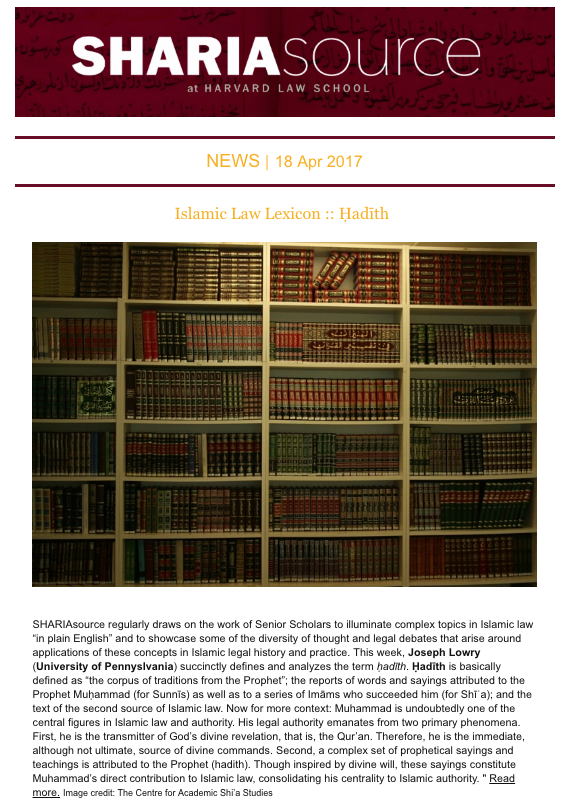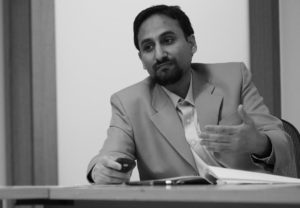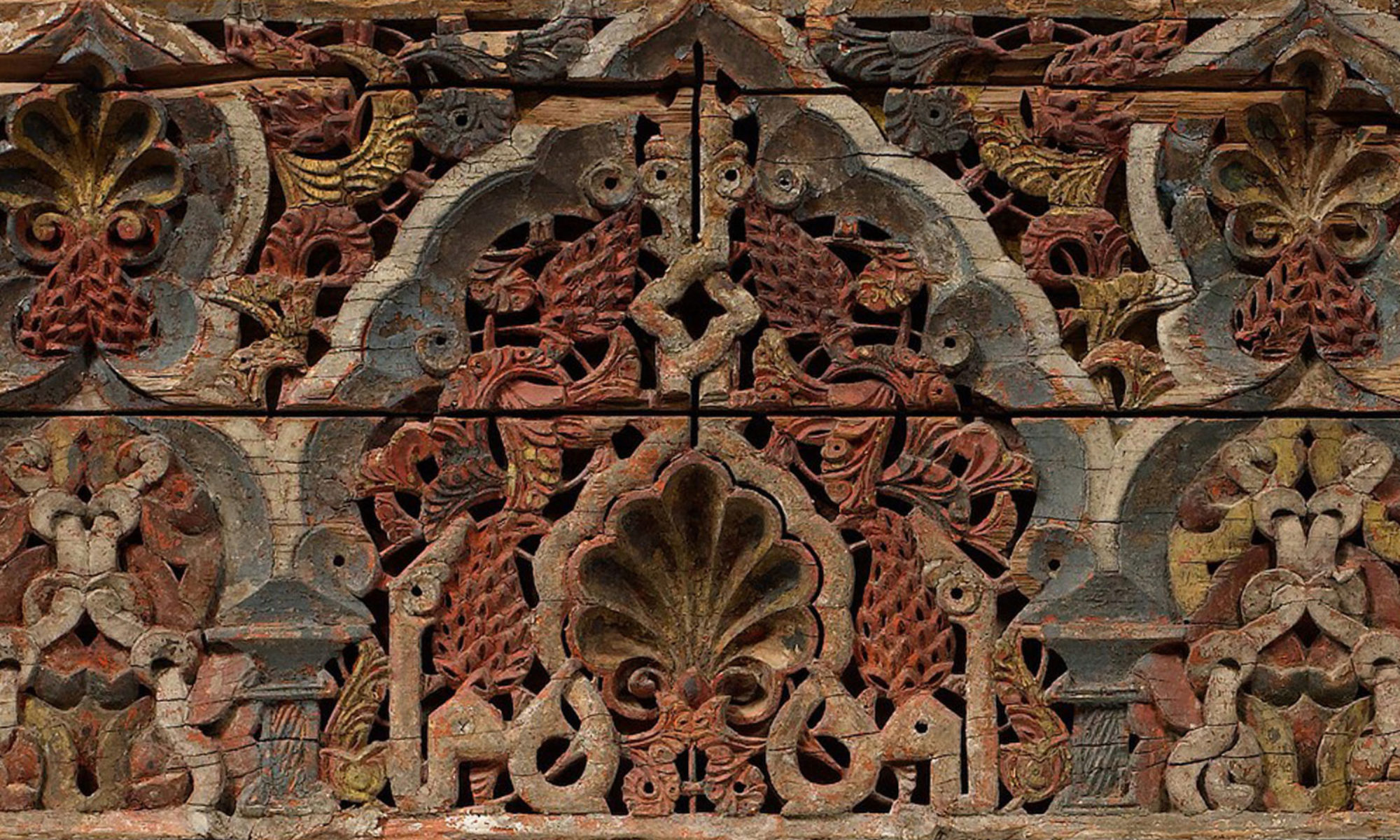
 Islamic Law Lexicon :: Ḥadīth SHARIAsource regularly draws on the work of Senior Scholars to illuminate complex topics in Islamic law “in plain English” and to showcase some of the diversity of thought and legal debates that arise around applications of these concepts in Islamic legal history and practice. This week, Joseph Lowry(University of Pennyslvania) succinctly defines and analyzes the term ḥadīth. Ḥadīth is basically defined as “the corpus of traditions from the Prophet”; the reports of words and sayings attributed to the Prophet Muḥammad (for Sunnīs) as well as to a series of Imāms who succeeded him (for Shīʿa); and the text of the second source of Islamic law. Now for more context: Muhammad is undoubtedly one of the central figures in Islamic law and authority. His legal authority emanates from two primary phenomena. First, he is the transmitter of God’s divine revelation, that is, the Qur’an. Therefore, he is the immediate, although not ultimate, source of divine commands. Second, a complex set of prophetical sayings and teachings is attributed to the Prophet (hadith). Though inspired by divine will, these sayings constitute Muhammad’s direct contribution to Islamic law, consolidating his centrality to Islamic authority. ” Read more. Image credit: The Centre for Academic Shi’a Studies
Islamic Law Lexicon :: Ḥadīth SHARIAsource regularly draws on the work of Senior Scholars to illuminate complex topics in Islamic law “in plain English” and to showcase some of the diversity of thought and legal debates that arise around applications of these concepts in Islamic legal history and practice. This week, Joseph Lowry(University of Pennyslvania) succinctly defines and analyzes the term ḥadīth. Ḥadīth is basically defined as “the corpus of traditions from the Prophet”; the reports of words and sayings attributed to the Prophet Muḥammad (for Sunnīs) as well as to a series of Imāms who succeeded him (for Shīʿa); and the text of the second source of Islamic law. Now for more context: Muhammad is undoubtedly one of the central figures in Islamic law and authority. His legal authority emanates from two primary phenomena. First, he is the transmitter of God’s divine revelation, that is, the Qur’an. Therefore, he is the immediate, although not ultimate, source of divine commands. Second, a complex set of prophetical sayings and teachings is attributed to the Prophet (hadith). Though inspired by divine will, these sayings constitute Muhammad’s direct contribution to Islamic law, consolidating his centrality to Islamic authority. ” Read more. Image credit: The Centre for Academic Shi’a Studies
 CCASE: The State of Bombay v. Narasu Appa Mali In Narasu Appa Mali in 1952, the Bombay High Court limited its own ability to address the constitutionality of Muslim personal law in India, holding that personal laws are not “laws in force” within the purview of Article 13 of the Constitution, and thus need not satisfy the fundamental rights test. Read more. Image credit: Local Press Co.
CCASE: The State of Bombay v. Narasu Appa Mali In Narasu Appa Mali in 1952, the Bombay High Court limited its own ability to address the constitutionality of Muslim personal law in India, holding that personal laws are not “laws in force” within the purview of Article 13 of the Constitution, and thus need not satisfy the fundamental rights test. Read more. Image credit: Local Press Co.
 EVENT: Shah Waliullah Dehlavi and His Neglected Views on Islamic Law Islamic Legal Studies Program SHARIAsource / Fulbright Fellow Dr. Mubasher Hussainintroduced the work of Shah Waliullah Dehlavi to the Harvard community on 17 April 2017. Hussain discussed Shah Waliullah often-overlooked thoughts on Islamic jurisprudence, focusing on the ways in which he differentiated between scholars of Islamic law labeled “first rank independent muftis” and “first rank affiliated muftis.” Read more. Image credit: Darrick Northington
EVENT: Shah Waliullah Dehlavi and His Neglected Views on Islamic Law Islamic Legal Studies Program SHARIAsource / Fulbright Fellow Dr. Mubasher Hussainintroduced the work of Shah Waliullah Dehlavi to the Harvard community on 17 April 2017. Hussain discussed Shah Waliullah often-overlooked thoughts on Islamic jurisprudence, focusing on the ways in which he differentiated between scholars of Islamic law labeled “first rank independent muftis” and “first rank affiliated muftis.” Read more. Image credit: Darrick Northington
See the full newsletter.

